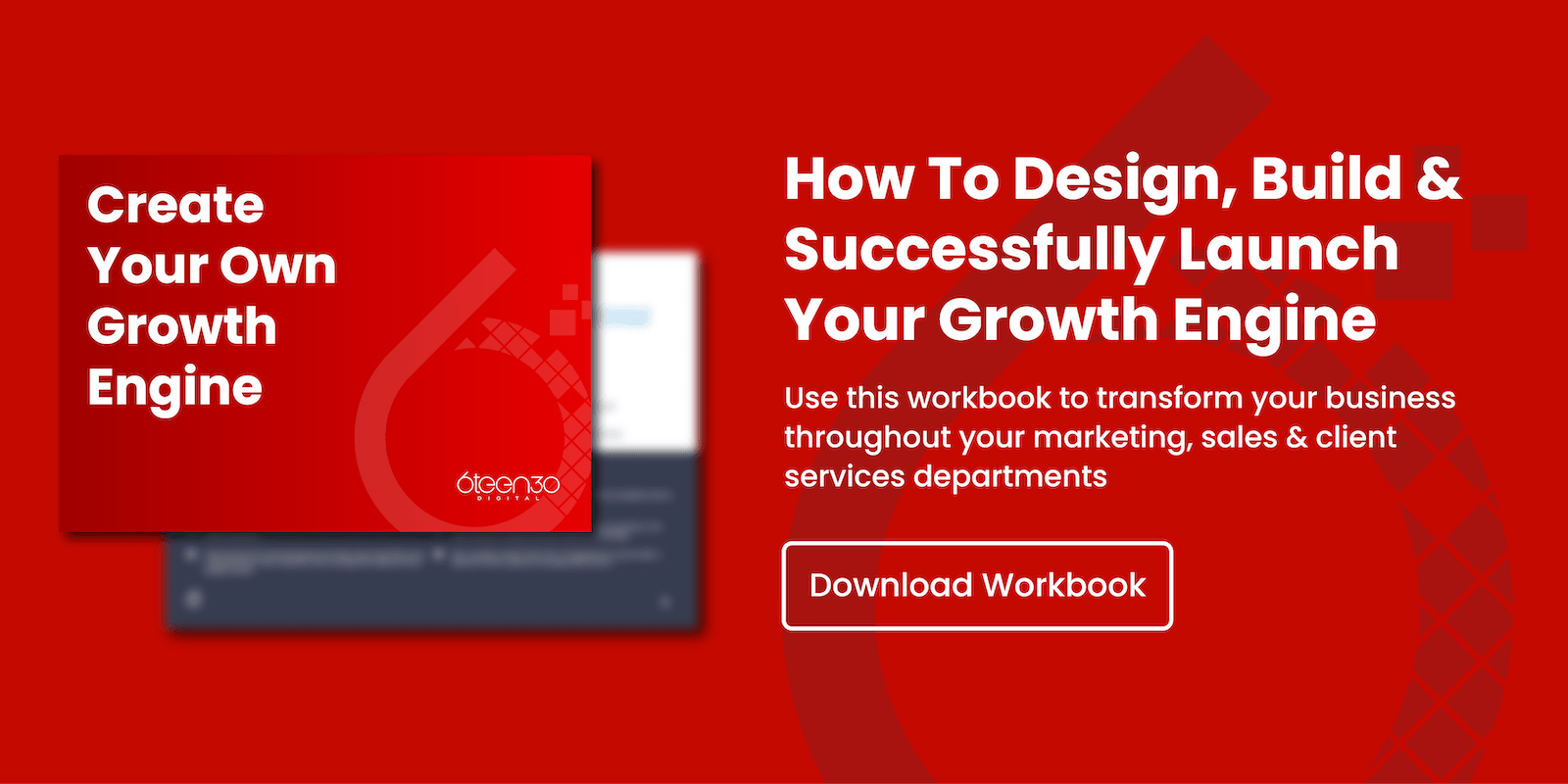Introduction
In this session I'd like to get you to focus really hard on your most profitable customer. We get a lot of questions asked around how can we make more profit, how can we grow as a business. How can we get a better return on investment on this market and they're all valid questions and the simple answer, that we put back is there are more ways to skin a cat to achieve any of those objectives.
However, the number one thing, that we take every client back to is how well do you know your most profitable customer. The successful business out there spending significant amounts of time investing into research into really drilling down to a granular state their most profitable customer.
How to Imply & Implement?
There's a bit of a checklist step to take through before I share with you some of the processes, that you can actually imply and implement. Let's just take you through the journey, so if we look at the most profitable product or service, that you can supply to a client, then let's just get that clear in our heads first.
You may have six or seven products, six or seven channels, but just for this exercise, pick out one. Pick out your most profitable product, that you like doing or enjoy doing, you know you can turn over, you know how to be fast. Once you've got that in mind, then we need to start that you always need the most ideal clients or customers to buy that product and here's the step that we'll take you through. What is the best suited to that customer
- What we do is give them a name, give that person a name and he may be the customer, that you've already supplied this to. So you may be thinking, yeah I've got Mrs Smith or Mr Jones at mine, it was exactly that perfect customer, so give them a name.
- How old are they, because that's a big, it's certainly a big driver in marketing, because if you got a market teenage kids, the type of copy or medium or imagery, that you're going to use is going to be significantly different, then if you're going to be marketing to retired, over 65, for example, so how old are they?
- What's their geographical location, are they in a specific part of a region or a locality or are they national here.
- Do they have any children, why does that matter? Depends on your product or service, if you're doing anything, that is related to family or enjoyment or space at home, then understanding that they've got growing family and kids it's is a big part of it for sure.
- What do they earn, what's their income?
You're not just going to pick up the phone and ask these people how much they earn, that's a way of the agreement of acceptability, but it helps you put your pricing point, it helps you with your product point. If you're selling a premium product to a wealthy family or a wealthy individual.
Then you don't want to be worried about pence and pounds. Being five or 10% on the premium product doesn't matter. It does matter, but it's not as impactful negatively if you're two or three hundred pounds more or two or three thousand pounds more.
If you're targeting a lower income bracket, then yes, you might need a situation, where you need to be more price focused. What do they do for a living, are they professors or are they just getting started on apprenticeship.
Different levels of education, all translated to your marketing business. That's on stage one, maybe spend 30 minutes or so just on that section alone. The second section is all about the goals and values.
Goals & Values
By engaging with your company, by engaging with your product or service, what are the goals, what do they want to get out of it and why are they buying your products. So get that mapped out and try and map your top three goals.
Your values, what do they value, everybody wants a quality of service at a competitive price. I get that, but maybe on the values, the main value along with the warranty or the main value at 24 seven support, what's valuable to them about buying your products or services. What are their values, integrity, things like that of course. That's section two, as you move forward into section three, where do they hang out.
The End Result
How does your product positively impact them in what they do, in what the end result will be after they've bought the product or service? Secondly or thirdly on that particular point, if you are not 100% clear exactly about how you solve your customer's problems, challenges or pain points.
How you really help move them through the gears to help them achieve the pains or aspirations, then you've some work to do, you've really some work to do and my immediate advice is stop marketing full stop because you're probably putting up the wrong message. That's one of the biggest areas you'll concentrate on. Then the final point in the section is 'understand', when you're building your avatar out, what is the role in the decision-making process.
- Are they the decision maker?
- Are they the influencer?
- Do they influence somebody to make that decision on their behalf or are they a joint decision maker? Maybe a man and a wife or a couple, who are buying together.
But don't miss, not the obvious, but don't miss the external decision, that a lot of business owners often overlook and don't take into consideration, when trying to sell a product or service. What that is is the external decision.

What I mean by that is that if you're selling a product, that maybe needs a large investment or it needs some type of legal approval, so you could be selling a car, for example. Now I'm not saying people don't buy cars for cash anymore and maybe they do, but a lot of people are reliant on only the bank loans or credit, like lease agreements.
If you're trying to push your product and you are overlooking the fact, that your client or your customer may want to buy with you, or buy from you, should I say, but it's subjective to them getting the thumbs up or having credit approval to get there.
Salespeople Pushing For Decisions
I see too many salespeople pushing for decisions, when basics, like funded arrangements and the other external decision, is if you're maybe pushing a property improvement. But in subjective planning or building control.
Again, they may want to go with you on that basis. But they need that funds up from the planning process before they're given a go with it. You might want to, not only have that in your mindset, but you might also want to, sort to say, well, hey, if this is a sticking point in my sales fund when I can't get a decision out of this customer to the planning process.
Why not think about expanding your product out to offer that service, to become a licensed credit broker and then start to offer finance, so you could say, look, I know you're looking to go and get a bank loan, we do finance, I can take the application, get a decision late today or tomorrow afternoon and we'll come and wait for it. It's sort of stopping that customer going external, not only to banking or anything else but to companies who do offer that type of funding.
Again, planning situation, you may want to say, hey, we do manage planning service, where we'll help you fill the forms, we'll help you go through that process. We'll give you advice on that or even maybe higher in expertise somebody, who's more experienced in that. Understand that in the decision making process and also how long that takes to happen.
Pushing Your Customers...Don't Do It!
Salespeople and business owners, I see it all the time, they want to take an inquiry, they want to have a chat with somebody. They want to quote them and then they'll say can I have your business, buy my stuff, buy my stuff, buy my stuff.
Where in reality, you've got to flip that into your buyer's journey, so stop thinking about your sales process and start thinking about your customer's buying journey. If that takes a week or two weeks or a month or three months, then you've got to understand that.
Now of course, with your marketing, you can influence that and you can start to steer, educate, provide information to help them move faster to do that process. But it's pointless chasing chasing chasing and we've all been in these situations, where we may be gone to buy a product and then the salesperson was on the phone the next day.
Hey, what did you think, do you want to go ahead? Whose agenda is that salesperson running? They're running theirs, because more likely their sales manager's going to be on their back and close that deal down.
They're not really looking at the main considerate things, that's important to you and you might want to think about it, you might want to go and get two or three of the quotes. You might want to get some demonstrations or try before you buy or whatever process you go through.
Bit of a lengthy post this one and I appreciate that, but what you've got here is gold, if you choose to overlook it, just keep marketing it out. Then you're probably going to have a low return on investment in your marketing.
Attached to the post on our blog, which is blog.6teen30.com, there is a document you can download, we call it a cheat sheet, an avatar cheat sheet.
As you go down write down and it's all the things that I've talked about in this video and on this post and you can download the cheat sheet. You can start to fill it in and you can start to get a lot clearer about your ideal and most profitable customer and then you start to position your product or service and then take that knowledge. That understanding to call them out and get a better connection with them.









%20-%20Teal.png?width=500&height=130&name=Force%20%26%20Friction%20-%20Branding%20-%20Logo%20(White)%20-%20Teal.png)